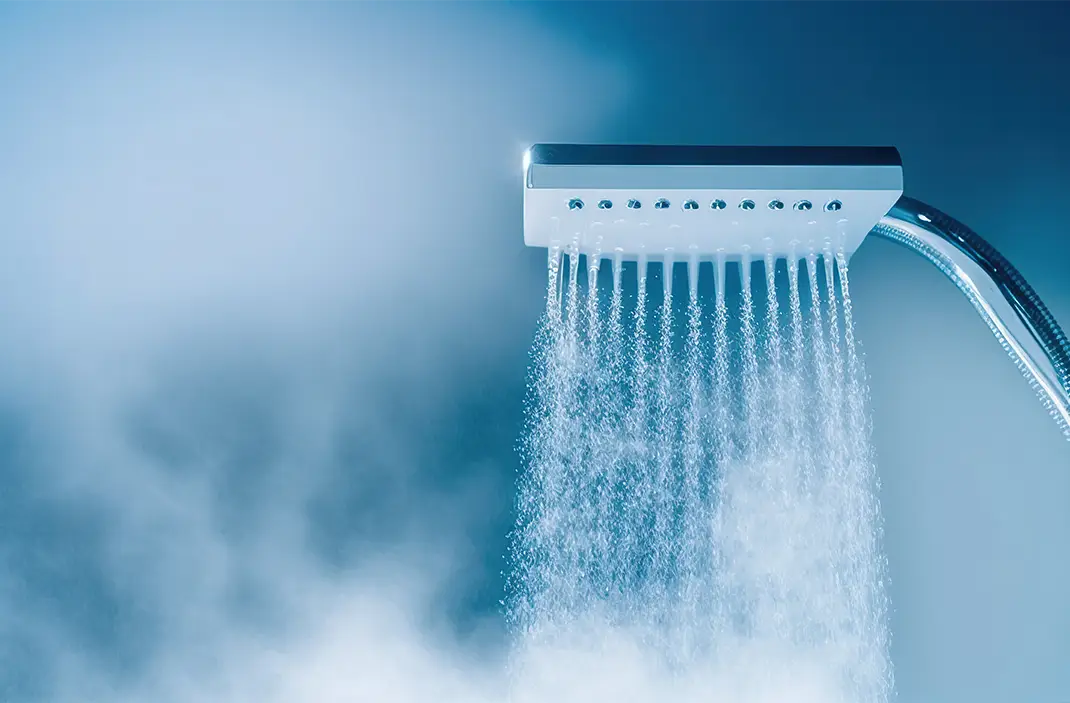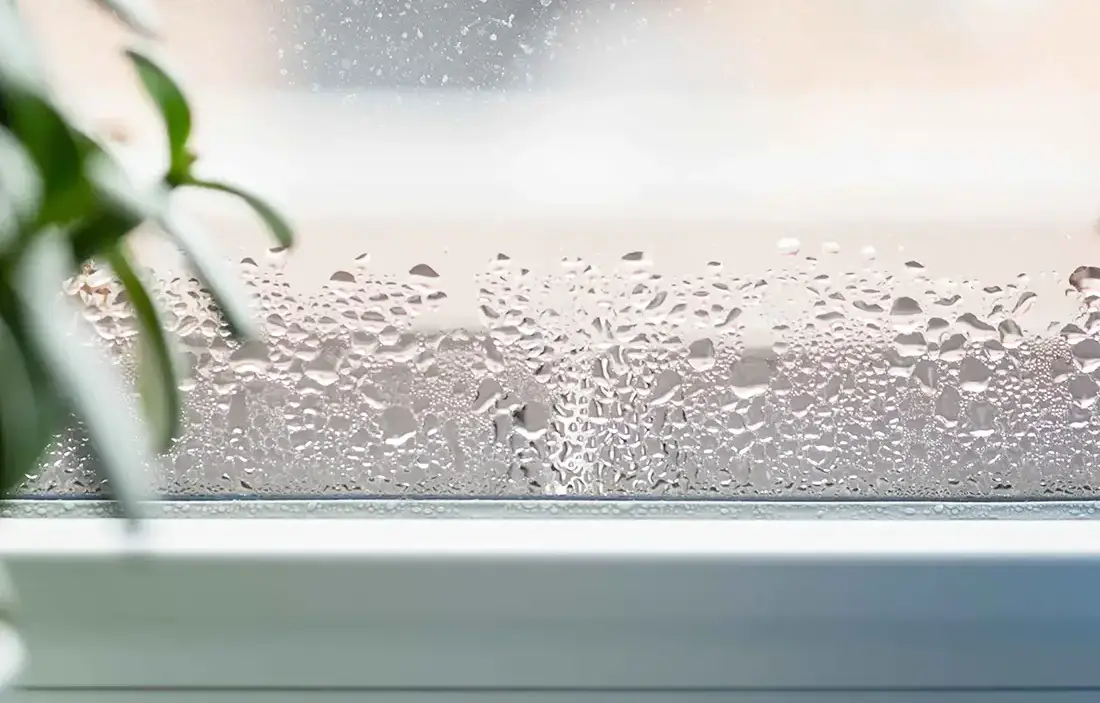Temperature & Humidity
There’s nothing as unpredictable as the weather. One day it’s raining and the wind is blowing, the other day the sky is blue and the sun is shining. In addition, sudden snowfall and heatwaves are no longer uncommon. These unpredictable outdoor weather conditions can lead to considerable fluctuations in indoor temperature and relative humidity. Both factors play a major role in indoor comfort.
Temperature
Temperature defines how hot or cold something feels and is typically measured in degrees Celsius (°C) or Fahrenheit (°F).
The ambient room temperature is the average temperature within a space. This is the temperature at which most people feel comfortable indoors: not too hot and not too cold. This temperature typically lies between 21 °C and 25 °C, often referred to as the thermal comfort zone.

However, the perception of temperature differs from person to person. It is
important to create a general feeling of comfort for everyone. Whether you’re
working in the office, studying at school, or simply relaxing with a book at
home,
the environmental temperature affects your overall mental and physical
well-being.
It’s a critical, but crucial balance. When the surrounding temperature is too
high,
we immediately feel the effect as we feel clammy and become tired. However,
lowering
the temperature too much can have an adverse effect as well. Our concentration
drops, and all we want is to warm up again.
Temperatures between 18 °C and 20 °C may already feel cold. This can feel uncomfortable but is not unhealthy, most people can adapt to this temperature. The cold feeling creates a mild stress response that makes you slightly more alert, which can improve focus. This sharpened focus, however, will fade if you stay in the cold too long, and discomfort will take over, making concentration difficult again. Temperatures between 15 °C and 17 °C are acceptable for short periods, or when performing physically demanding tasks, but not when sitting still. Long-term exposure to indoor temperatures below 15 °C can have negative effects on our health.
Humidity
Water exists in three states: liquid, solid (ice), or gas (water vapour). Water evaporates into the atmosphere from oceans, lakes, rivers, plants, the ground, and rainfall. This water vapour is then transported by wind from one place to another.
The absolute humidity measures the actual amount of water vapour in the air, regardless of the air's temperature. The relative humidity (RH), on the other hand, measures water vapour relative to the air’s temperature.

It is the ratio of water vapour in the air to the maximum possible amount of water vapour in the air at that specific temperature. The more water vapour absorbed in the air, the higher the relative humidity. Warm air can hold more moisture than cold air, so at the same absolute humidity, the relative humidity in cold air would be much higher than in warm air. The relative humidity is expressed in %. A relative humidity of 100% does not mean that the room is flooded; it means that the air cannot absorb extra moisture. The air has reached its saturation point.
Most people feel comfortable in environments with a relative humidity between 40% and 60%. When the relative humidity is too low, the air becomes dry, which can cause dry skin, itchy eyes, irritated nasal passages, and even nosebleeds. It can also exacerbate cold symptoms and respiratory conditions. In addition, low humidity increases static electricity, which you may feel in your clothes, hair, and on furniture.
Conversely, excessively high relative humidity causes condensation on windows, walls, and ceilings that are cooler than the air, potentially damaging building materials and causing unpleasant odours in poorly ventilated spaces. This can worsen health conditions such as allergies and asthma. To prevent mould growth and odours, it’s also essential to monitor the indoor dew point of a building.
Dew Point
The dew point temperature is the temperature at which condensation starts. In other words, it is the temperature at which air becomes saturated with moisture, leading to condensation on surfaces and objects that have the dew point temperature or lower. The dew point temperature is determined by the relative humidity and the temperature of the air.
Indoors, the relative humidity is mainly determined by routine daily activities of the residents. Showering, cooking, drying clothes indoors, or simply breathing, all increase the relative humidity considerably as more moisture is released in the indoor air while the temperature remains constant.

The maximum amount of water vapour that can be absorbed in the air depends on the temperature. When the relative humidity is 100%, the air has reached its saturation point. When temperature increases, the air can absorb a higher amount of water vapour. This will cause the relative humidity to drop. When temperature decreases, the relative humidity will rise. To avoid problems with condensation, this excess moisture must be removed from the indoor air using a ventilation system.
The relative humidity level can vary from room to room; the kitchen and bathroom are usually more humid than other areas and need to be sufficiently ventilated.
Sentera developed a wide range of temperature and humidity sensors. Typical applications are humid spaces like bathrooms and wine cellars but also kitchens, changing rooms, swimming pools etc. Since both temperature and humidity are such determinant factors for our well-being, also our CO2 and VOC sensors measure these values.